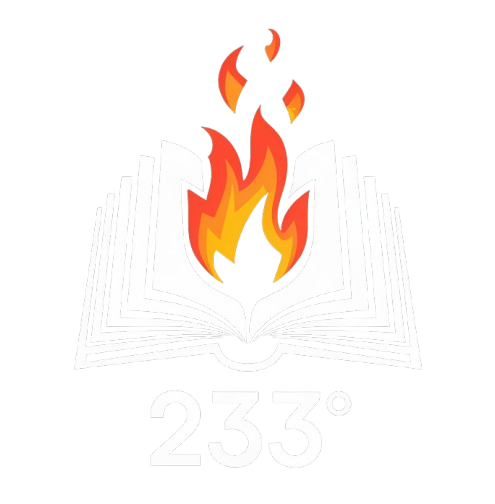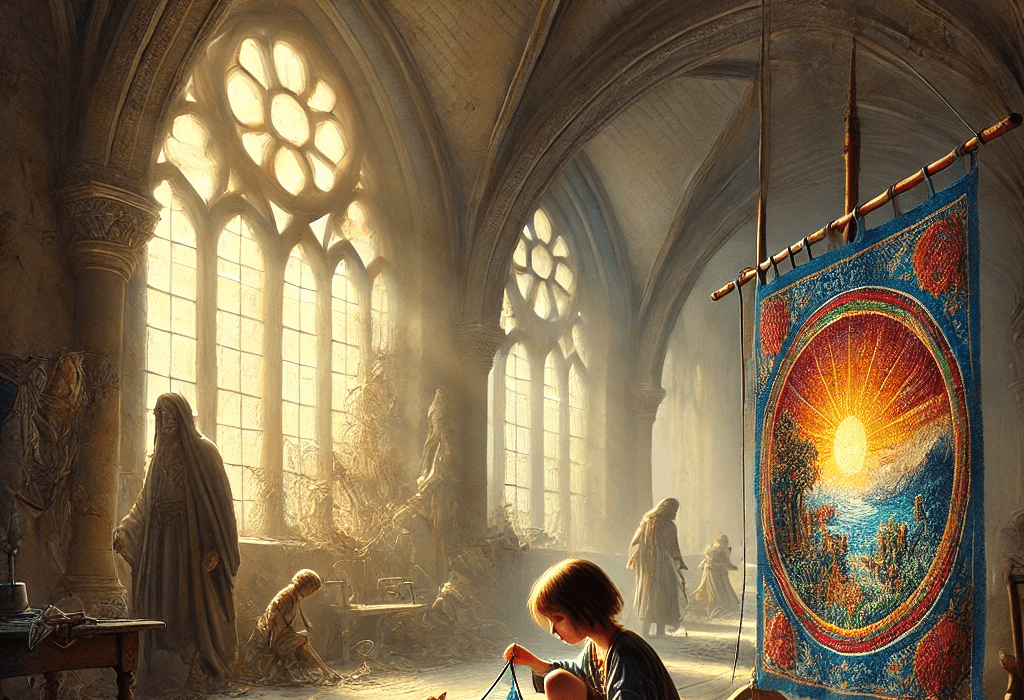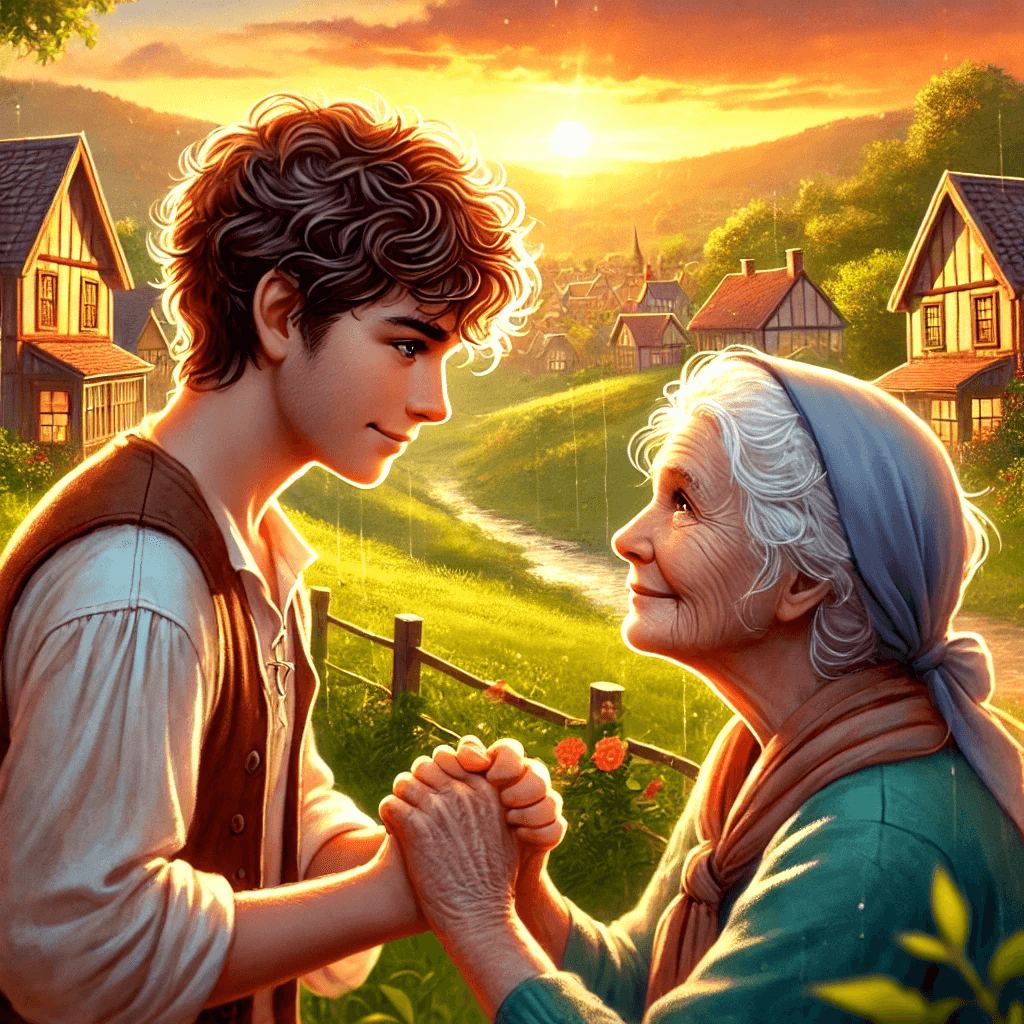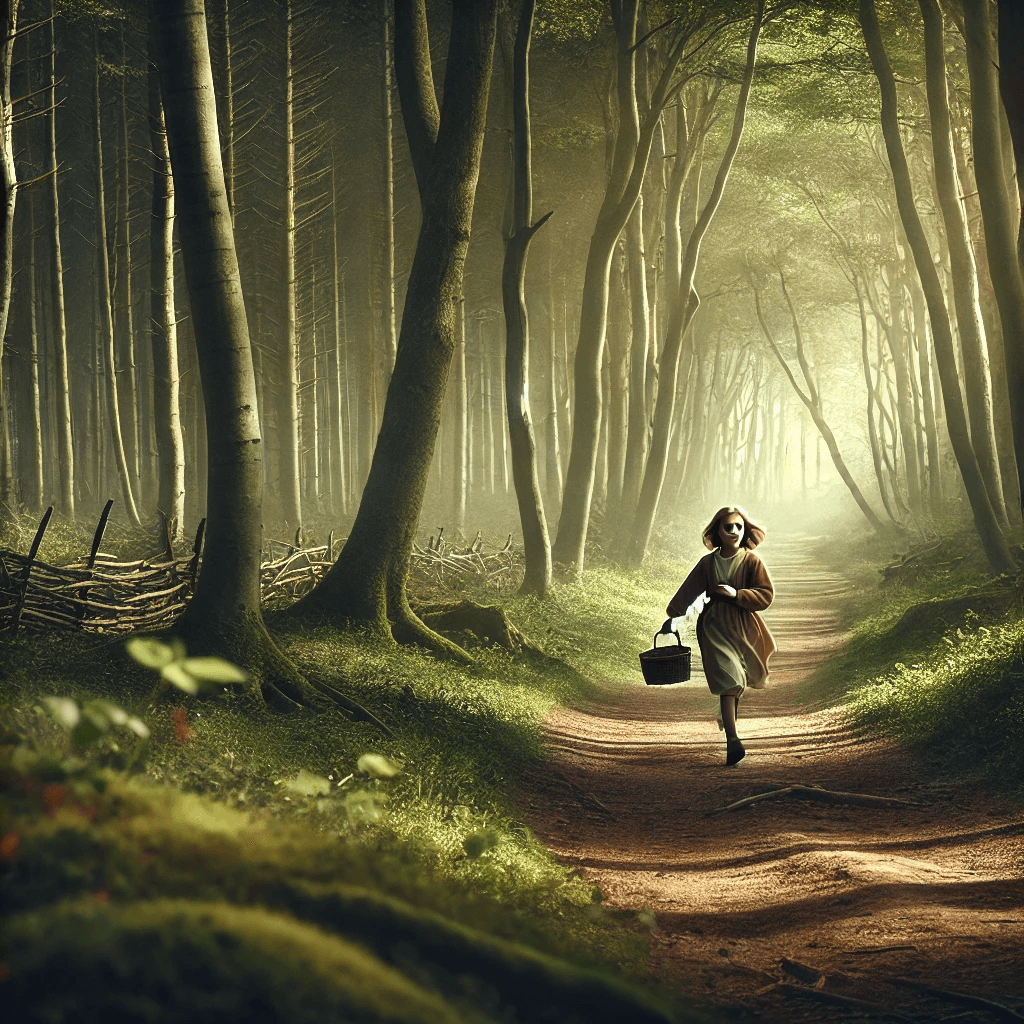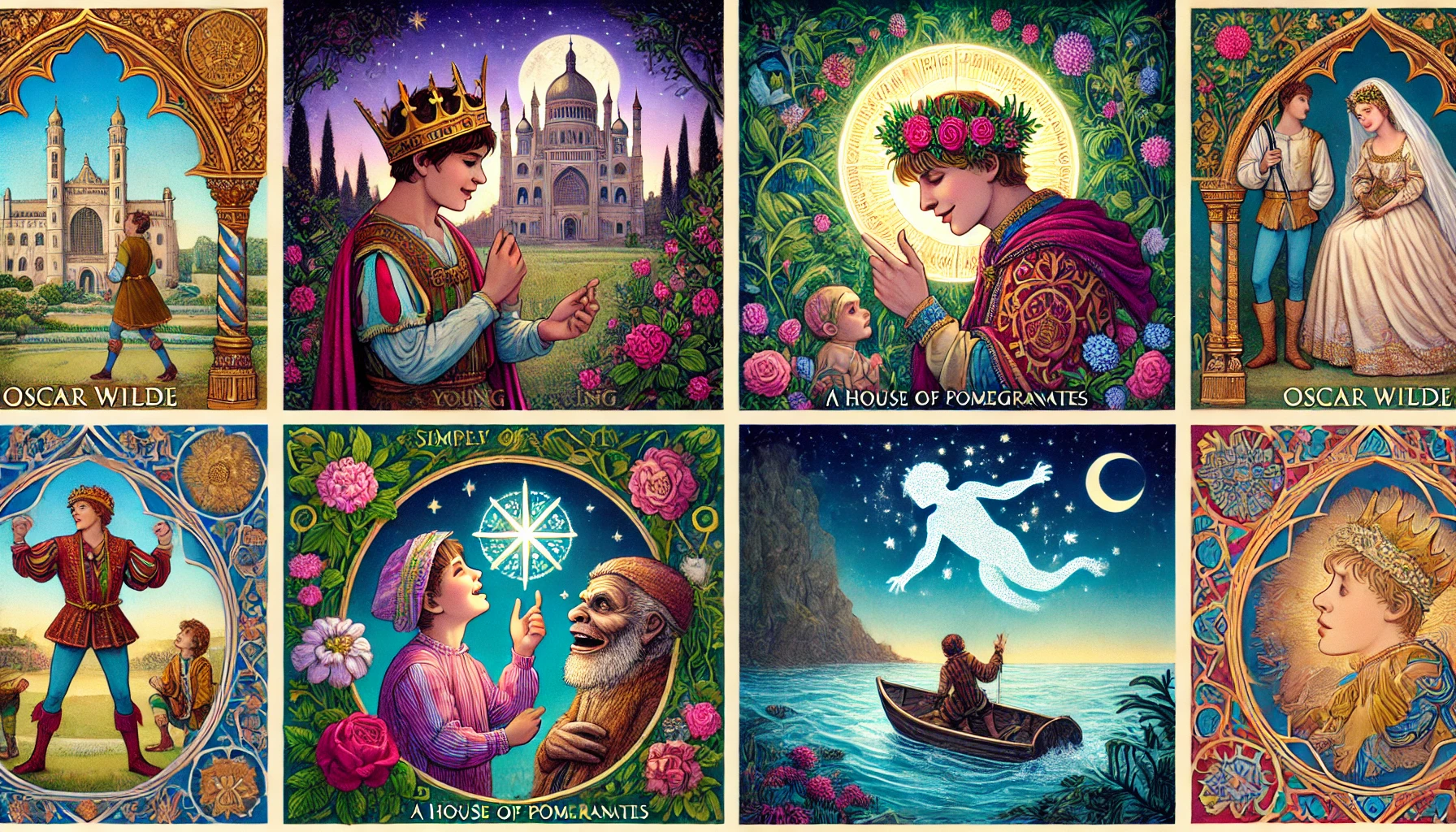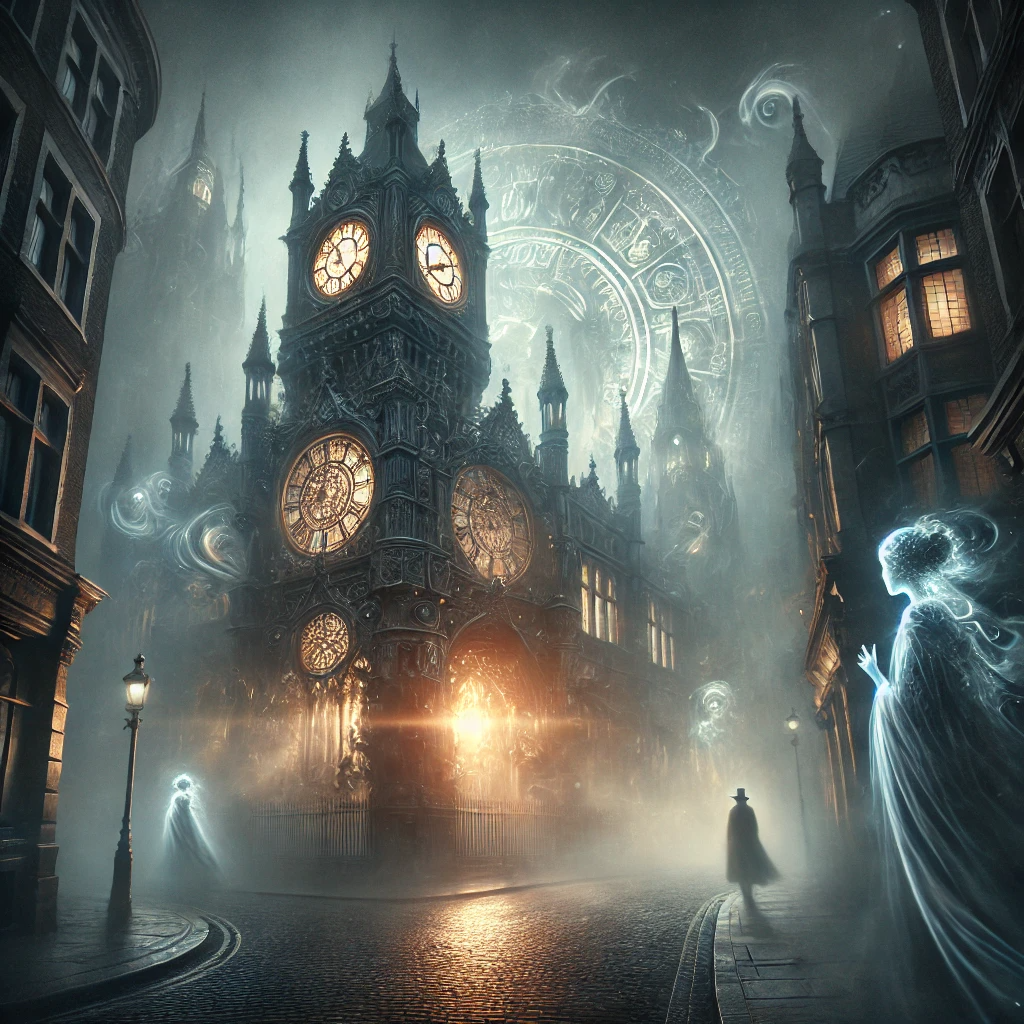Gathering Blue by Lois Lowry, published in 2000, is the second book in The Giver Quartet. It is a dystopian tale of survival, creativity, and hope. Following Kira, a young girl with a disability in a society that values strength over compassion, the story explores the power of art and the resilience of the human spirit in a community ruled by fear and control.
Plot Summary
Kira stood at the edge of her world, surrounded by loss and uncertainty. Her mother had died from a sudden illness, leaving her alone in a village that scorned the weak and the imperfect. With her twisted leg, Kira was a target for those who believed she was a burden. Vandara, a cruel and ambitious woman, led the charge to banish Kira, seeking to claim her home and land for a new pen to corral children and chickens. Kira’s only refuge was the Council of Guardians, the village’s ultimate authority, who would decide her fate.
Kira’s trial was tense, the weight of her existence hanging in the balance. Vandara argued that Kira should have been left to die at birth, as was customary for imperfect children. Yet Kira’s calm defiance and the skill of her defender, Jamison, turned the tide. Jamison argued that exceptions to the village’s harsh rules were possible, and he reminded the Council of Kira’s remarkable talent with thread. Her artistry was undeniable, a gift passed down from her mother, who had repaired the Singer’s robe—a ceremonial garment adorned with the history of their people. The Council decreed that Kira would stay, not as a laborer or a wife, but as the one chosen to repair and complete the intricate designs on the robe.
Kira moved into the Edifice, a grand and ancient structure from a time before the Ruin. Within its walls, she was given a room of her own, a privilege unheard of for someone like her. Her task was daunting: to restore the robe’s worn sections and eventually add new designs, depicting the unwritten future of their people. Kira began her work in earnest, immersing herself in the threads and colors her mother had taught her to use. But something was missing—blue, a color her mother had never been able to create. This missing hue became a symbol of her longing for completeness.
Her days were consumed with her task, but Kira was not alone. Matt, a scrappy boy from the Fen, often visited her, bringing both mischief and comfort. His loyal dog, Branch, was never far behind. Matt’s wild energy and fierce loyalty contrasted with Kira’s introspection, but their friendship was a bright spot in her new life. Jamison, too, provided guidance and protection, though his presence carried a shadow Kira could not yet define.
To perfect her craft, Kira sought out Annabella, an elderly woman who lived beyond the village. Annabella was a dyer, her knowledge of plants and techniques unmatched. The old woman began to teach Kira the secrets of creating vibrant colors, including hints of the elusive blue. But Annabella’s lessons also brought unsettling revelations. She whispered that there were no beasts in the woods, contradicting the tales of terror the villagers had always believed. Kira, troubled yet curious, began to question the truths she had been told.
When Kira returned to Annabella’s home one day, she discovered that the old woman was gone. The villagers claimed she had died peacefully, but the abruptness of her disappearance raised Kira’s suspicions. Jamison’s assurances did little to quell her unease. The Edifice, once a sanctuary, began to feel like a cage, its walls closing in as Kira’s understanding of her world deepened.
Meanwhile, Matt’s antics took a surprising turn. He disappeared from the village, embarking on a journey he refused to explain. When he returned, he brought with him a gift: blue threads, a treasure from a far-off place where the plants needed to make the color grew. But Matt also brought something far more precious—a blind man named Christopher. Christopher, as it turned out, was Kira’s father, long thought dead. He had been attacked and left to die during a hunt, but he had survived and found refuge in a distant, more compassionate community.
Christopher revealed the truth about the village’s leaders. The Council of Guardians ruled through fear and manipulation, controlling the people by keeping them isolated and ignorant. Even the Singer, the revered figure who recited the Ruin Song, was a prisoner, chained to his role and the heavy robe that Kira now tended. Christopher urged Kira to leave with him, to join his community where kindness and cooperation prevailed. Yet Kira hesitated, torn between the promise of a better life and the weight of her responsibility.
Kira chose to stay. Her gift with thread was not just a skill; it was a tool for change. She resolved to use her artistry to weave a new future for her people, to subtly guide them toward a world of understanding and hope. With Christopher’s encouragement and Matt’s unwavering support, Kira found strength in her decision. She would remain in the village, working quietly but determinedly to transform the patterns of their lives.
In the stillness of the Edifice, as her hands moved deftly through the threads, Kira envisioned a brighter world—a world where no one was cast aside, where every color, even blue, found its place. The future was hers to weave.
Main Characters
- Kira: The protagonist, a kind, intelligent, and talented weaver with a twisted leg. Despite her society’s disdain for imperfections, Kira’s artistic gifts make her invaluable to her village and offer her hope of transforming her bleak world.
- Vandara: A cruel, ambitious woman who represents the brutality and selfishness of the society. She challenges Kira’s right to live, seeking her land for personal use.
- Matt: Kira’s loyal, resourceful young friend from the impoverished Fen. He provides comic relief, emotional support, and unexpected wisdom throughout her journey.
- Jamison: A Council member who defends Kira and assigns her the task of restoring the Singer’s robe. His motives are enigmatic, hinting at the darker complexities of the ruling elite.
- Annabella: An elderly woman who teaches Kira the art of dyeing threads, imparting wisdom and revealing secrets about their society.
Theme
- Creativity and Art as Survival: Kira’s weaving talent is central to her survival and signifies the importance of preserving culture and creativity in a repressive world.
- Disability and Resilience: Kira’s disability, initially a perceived weakness, becomes her strength, challenging societal norms and demonstrating the value of diversity.
- Power and Oppression: The authoritarian rule of the Council reflects the dangers of unchecked power, as they manipulate art and history to maintain control.
- The Role of Storytelling: Through the Singer’s robe, Song, and Kira’s threadings, the novel underscores how stories preserve memory and shape collective identity.
- Hope and Transformation: Kira’s journey represents hope for change in a society rooted in fear and despair, suggesting that individuals can inspire broader transformations.
Writing Style and Tone
Lois Lowry’s writing style in Gathering Blue is straightforward yet richly descriptive, employing a minimalist approach to dialogue and setting that enhances the starkness of Kira’s world. Lowry’s prose is imbued with quiet poignancy, allowing readers to experience the depth of Kira’s emotions and the subtle beauty of her artistry.
The tone is reflective and somber, capturing the bleak realities of the dystopian society while balancing it with moments of warmth and hope. Lowry uses a third-person limited perspective to maintain an intimate connection with Kira, ensuring readers experience her growth, fears, and triumphs firsthand.
We hope this summary has sparked your interest and would appreciate you following Celsius 233 on social media:
There’s a treasure trove of other fascinating book summaries waiting for you. Check out our collection of stories that inspire, thrill, and provoke thought, just like this one by checking out the Book Shelf or the Library
Remember, while our summaries capture the essence, they can never replace the full experience of reading the book. If this summary intrigued you, consider diving into the complete story – buy the book and immerse yourself in the author’s original work.
If you want to request a book summary, click here.
When Saurabh is not working/watching football/reading books/traveling, you can reach him via Twitter/X, LinkedIn, or Threads
Restart reading!

